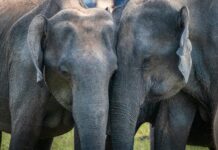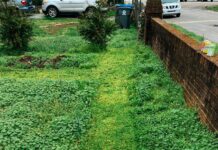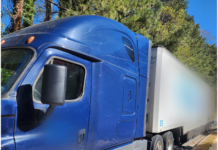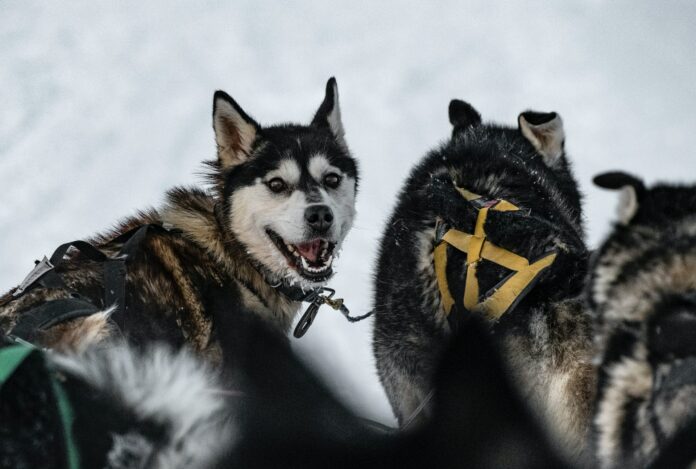Charlie Wheeler – It was my birthday and I was looking to create the experience of a lifetime. So, I set out to Alaska to try my hand at dog sledding through a winter wonderland.
During my first big run, the silence was broken by the scraping of ice and my desperate, ignored commands to my sled dog team as the Alaskan sky faded to indigo.
I caught occasional peeks over my shoulder as I sped down the icy stream. Where had my guide Mike gone? Where did all this get us? Did he realize that the distance between us was growing by the minute?
While we were out on a walk earlier in the evening, my lead dog caught the scent of something he just couldn’t resist. He disregarded my orders in favor of his natural inclination and turned around to lead the compliant pack in the opposite direction.
Even with all of my weight on the hook brake, I was only able to make a little dent in the ice. The device prevented me from tumbling to the ground in a crazily erratic manner, but it had no effect on the speed of the oncoming assault.
During our late-night conversations over the prior few days, Mike and I had gotten close enough for me to realize that I was in serious danger if we ever stopped talking.
Not only did I not have any spare clothes or a place to sleep, but I also did not have any means of starting a fire. Wolf footprints were something we frequently encountered, and it was at that point that I realized just how crucial having a fire would be for my own safety.
March marked the end of the bitterly cold winter that had gripped this part of interior Alaska for much of the previous year. Getting to my starting point required flying due to the frozen rivers and roads.
From Australia, I traveled by big plane, rail, and mail plane to the tiny Yukon village of Eagle, a fascinating, history-packed community of timber homes with a population of 85.
I walked from the little plane into a bear’s embrace, still in awe by the vastness of the Alaskan tundra. The kindness of the locals was quite remarkable. To begin, you must acquire the necessary clothing and equipment.
My 10-day journey began at the log house of my hosts, located a rough 4.5 miles (7 km) down the frozen Yukon River. My hosts, Wayne and Scarlett, practiced sustainable living by subsisting off the land through means such as hunting, fishing, and gathering. They were seasoned wilderness travelers who offered tours so that others can share in the thrill of discovery.
When I put on the Arctic-grade overalls, jacket, and boots, my 120lb (55kg) physique became a hulking monstrosity that had me feeling like a Sumo wrestler.
Competently guiding a sled dog team is more challenging than it appears. It was in my mind that I would be riding along with my feet firmly planted on the rails, my shoulders back, and a broad grin plastered over my face as I watched the scenery go by.
In reality, it’s far more of a physical challenge due to factors like having to anticipate your team, the surface ahead, probable camber (tilts in the path), and corrective movements.
The lead dog will turn when he reaches the end of the bend and sees no more trees. What’s left is logical. T-boning the tree is a humiliating and avoidable occurrence if you’re unprepared.
The “ice expressway” can range from perfectly smooth ice to chunks the size of dinner plates. One of those slammed down a side slide could send you racing for your SPOT tracking device.
It was a pleasure to follow gentle, snow-covered lines through the spruce forest. As I walked across the smooth surface of a little lake, I peered down and saw patterns suitable for the finest crystal: bubbles of varying sizes and forms, suspended in time, flowing into the murky depths.
You should keep in mind that a dog sled is not like an automobile. In mountainous regions, you won’t find any easy access to the slopes. Instead, you lead by example and step off to push while still encouraging your squad verbally. All at once, you’ll feel a rush of adrenaline, a chill down your spine, and a need to let loose with some choice language as you speed down the hill.
Moreover, there is surplus ice (liquid water sitting on top of a frozen layer); consider a slushy without the sprinkles or fruit flavoring. It was water up to your knees, cold, tiring, exciting, and enjoyable!
“Mike, can you think of anything else we could be doing here?” I inquired eagerly. To put it mildly, he looked at me like I had two heads.
Naturally, there were a lot of accidents involving spills. At the conclusion of one particularly thrilling downhill run, I landed effortlessly on a fluffy white cushion. Another time, the sled tipped over onto its side, and we all just kept going while the incompetent driver was face down on the ice, holding on by his hands.
Every night, we’d bring our teams to a new camp, which was usually an abandoned mine or trapper’s hut. They were our safety net and our way out, so we took great care of them. After settling in we spent the evenings gathering snow or ice for drinking and chopping wood for the fire. Nature’s masterpiece, the night sky was a ceiling of stars on clear evenings and a torrent of shimmering, emerald green curtains during the Northern Aurora.
One of these nights will go down in history as “the one that changed everything.” We dug in and used our bare hands and feet to build a lean-to shelter that protected us from the 0°F (-18°C) weather outside. Under our improvised roof, the warmth from the pit fire was reflected by a wall of logs as Mike spoke enthusiastically about the wonders of living in harmony with nature, the liberating effects of the four distinct seasons, and the unique difficulties that came with living in the wilderness.
The howling of wolves could be heard as I tucked down for the night next to a roaring fire. Feelings of profound fulfillment and appreciation for the incredible journey up to that point were at their peak.
I’ll never know how far into the night I went with my lost team. Thankfully, we avoided a spectacular wolf attack on our trip.
The group finally came to a stop when exhaustion set in, and Mike finally came around the corner on his way to find me. Our teams, eager to be reunified, charged at each other and were entangled, leaving us with a mess of rope spaghetti to untangle.
Nothing ever seemed boring.
In order to mark this milestone birthday, I set out in search of a true experience. And I found so much more. This pairing was ideal; a rare gem in a world when authentic, off-the-grid experiences are becoming increasingly rare.
Charlie Wheeler is a chef, a traveler, a dog lover, and is always optimistic.
Photo Source: Fredrik Solli Wandem, @fredrikwandem, via Unsplash.























